Mumbai

Mumbai, previously known as Bombay is one of the most populous and biggest cities of Maharashtra. According to the United Nations, as of 2018, Mumbai is the second-most populous city in the country after Delhi and the seventh-most populous city in the world with a population of roughly 20 million. Mumbai is also popular as the entertainment and financial capital of India. It is fondly called as the city of dreams. It is a place filled with dreamers and people who work hard day and night to achieve their dreams. The majorly spoken language is definitely Hindi , but this city has welcomed people from all faiths and religion warmly. If you want to know and experience diversity, visit Mumbai.
-
Marine Drive

Marine Drive is a 3km long, six lane concrete road in southern Mumbai which stretches north along the coastline, forming a natural bay. This C-shaped road links Nariman Point to Babulnath, and is situated at the foot of Malabar Hill. Known world over as Marine Drive, this tourist spot has also been called Sonapur by the locals of the city. The official name for this road, though rarely used, is Netaji Subhash Chandra Bose Road. Large crowds of people come to this place to stride along the beautiful walkway and to view the stunning sight of the setting sun at dusk. The scenic beauty of the perfectly lined palm trees offers its visitors an enthralling experience. Marine Drive is also referred to as 'Queen's necklace', because the street lights make the road look like a string of pearls and create an illusion of a necklace, when viewed at night from any elevated point along the pathway of the drive.
-
Bandra-Worli Sea Link
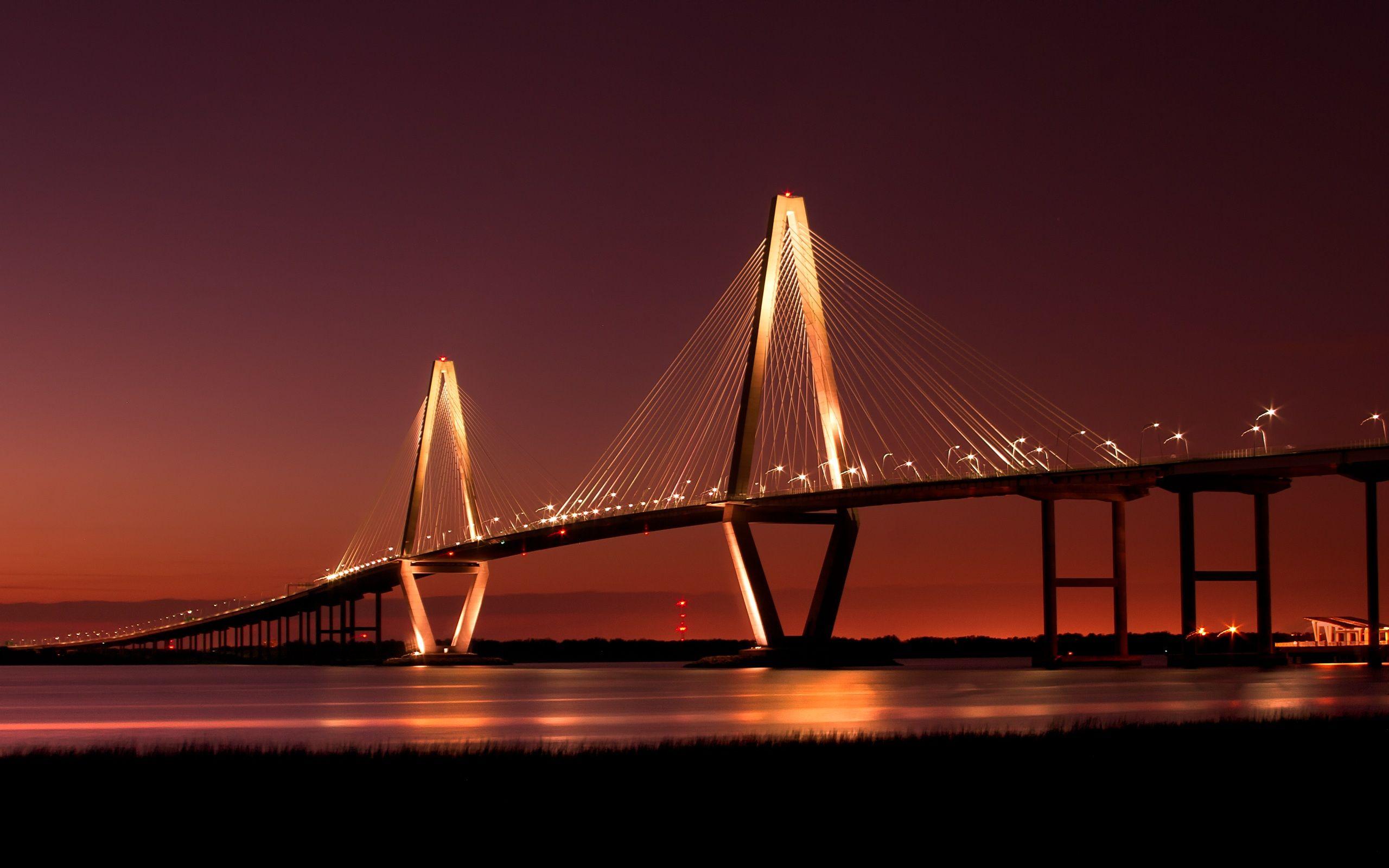
The Bandra–Worli Sea Link is a 5.6 km long, 8-lane wide bridge that links Bandra in the Western Suburbs of Mumbai with Worli in South Mumbai. It is a cable-stayed bridge with pre-stressed concrete-steel viaducts on either side. The 1M bridge was commissioned by the Maharashtra State Road Development Corporation (MSRDC), and built by the Hindustan Construction Company. The first four of the eight lanes of the bridge were opened to the public on 30 June 2009. All eight lanes were opened on 24 March 2010. The sea-link reduces travel time between Bandra and Worli during peak hours from 20 to 30 minutes to 10 minutes.
-
Gateway of India

The Gateway of India is one of India's most unique landmarks situated in the city of Mumbai. The colossal structure was constructed in 1924. It was erected to commemorate the landing in December 1911 at Wellington Pier, Mumbai of King-Emperor George V and Queen-Empress Mary, the first British monarch to visit India. At the time of the royal visit, the gateway was not yet built, and a cardboard structure greeted the monarch. Located at the tip of Apollo Bunder, the gateway overlooks the Mumbai harbor, bordered by the Arabian Sea in the Colaba district. The Gateway of India is a monument that marks India's chief ports and is a major tourist attraction for visitors who arrive in India for the first time. At one point of time, this monument represented the grandeur of the British Raj in India. The total construction cost of this monument was approximately 21 lakhs and the whole expense was borne by the Indian government. A favourite spot for tourists, nowadays, this monument attracts vendors, food stalls and photographers. The passing of the 'First Battalion of the Somerset Light Infantry' was recorded as the first main event that took place at the Gateway of India. This ceremony was conducted on February 28, 1948, when the last set of British troops and divisions left India, post-independence.
-
Chhatrapati Shivaji Terminus

The Chhatrapati Shivaji Terminus, formerly known as Victoria Terminus Station, in Mumbai, is an outstanding example of Victorian Gothic Revival architecture in India, blended with themes deriving from Indian traditional architecture. The building, designed by the British architect F. W. Stevens, became the symbol of Bombay as the ‘Gothic City’ and the major international mercantile port of India. The terminal was built over 10 years, starting in 1878, according to a High Victorian Gothic design based on late medieval Italian models. Its remarkable stone dome, turrets, pointed arches and eccentric ground plan are close to traditional Indian palace architecture. It is an outstanding example of the meeting of two cultures, as British architects worked with Indian craftsmen to include Indian architectural tradition and idioms thus forging a new style unique to Bombay.
-
The Asiatic Society

The Asiatic Society is the oldest centre of learning and research in the whole continent of Asia which was established in 1784 at the initiative of its Founder President Sir William Jones. The name of the society underwent several changes during the last two centuries such as the Asiatick Society of Bengal (1832-1935), the Royal Asiatick Society of Bengal (1936-1951) and in July 1952 it came to be known as the Asiatic Society. Since 1984 the Asiatic Society has been declared as an Institution of National Importance by an Act of Parliament of India. The library of the Asiatic Society is its most important asset and its importance lies not only in the numerical strength of its holdings but also in its rich and unique contents. The collection has been built up mainly with gifts received from its members.
-
Mount Mary Church

Mount Mary Church is a Roman Catholic Church, dedicated to 'Virgin Mary', situated in Mumbai. This ancient church, built in 1640 and then rebuilt in 1761, is also known as 'The Basilica of Our Lady of the Mount'. What makes this church even more beautiful is that it is sited on top of a hill known as 'Sunderban Bandra', which overlooks the mighty Arabian Sea. It is believed that the church has unbelievable healing powers and for this reason, the church is herded by devotees every day. Some also say that those who sincerely pray at the Mount Mary Church often get their wishes fulfilled. The 'Bandra Fair' or the 'Feast of Mount Mary' is a week-long celebration held every September at the Mount Mary Church. Tourists from all over the world who visit Mumbai always make sure to visit this popular church while in the city.
-
The Taj Mahal Palace
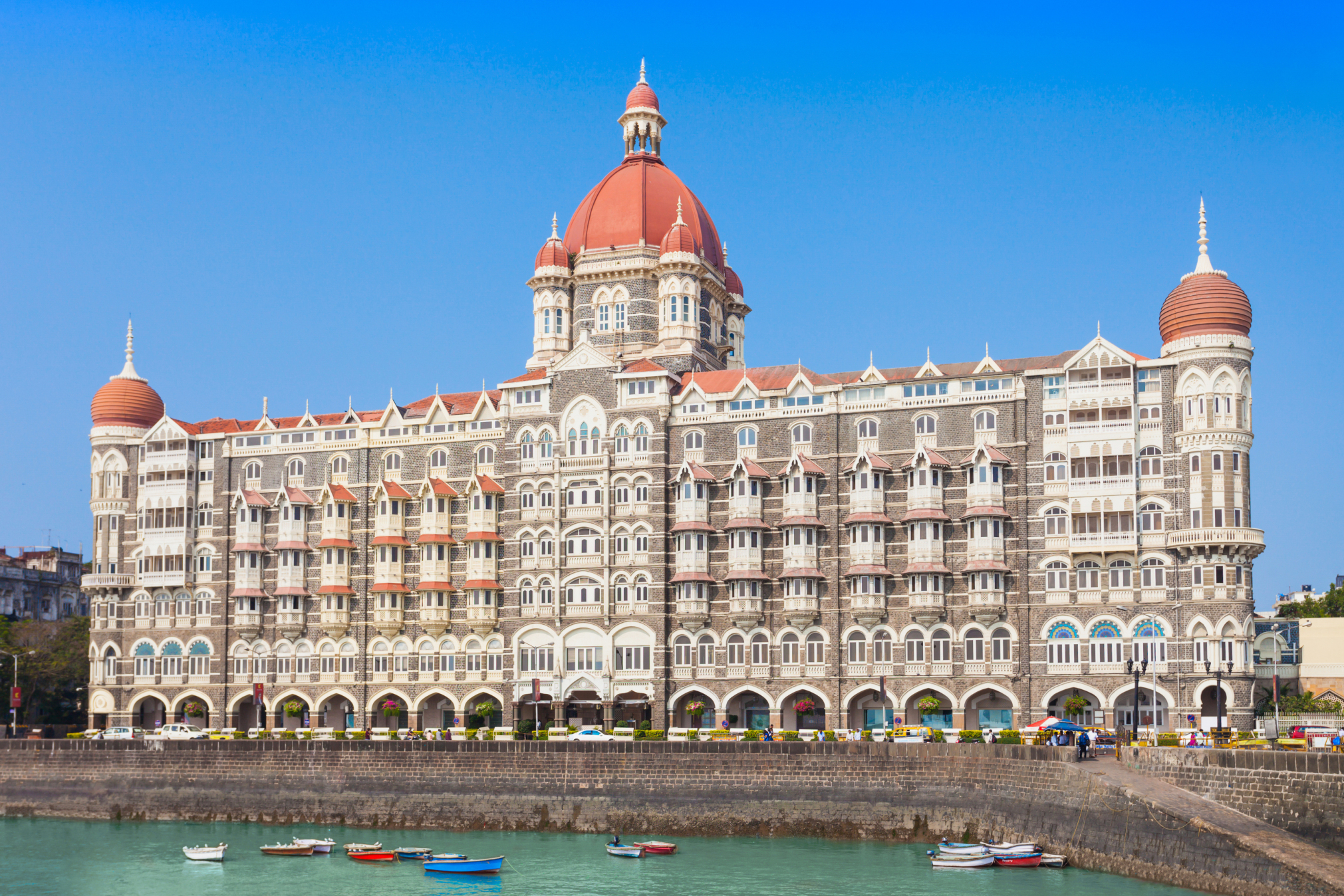
The Taj Mahal Palace is a heritage, five-star, luxury hotel in the Colaba area of Mumbai, Maharashtra, India, situated next to the Gateway of India. Built in the Saracenic Revival style, it opened in 1903 as the Taj Mahal Hotel and has historically often been known simply as "The Taj". The hotel is named after the Taj Mahal, which is located in the city of Agra approximately 1,050 kilometres from Mumbai. It has been considered one of the finest hotels in the East since the time of the British Raj. The hotel has a long and distinguished history, having received many notable guests, from presidents to captains of industry and show business stars
-
Kanheri Caves
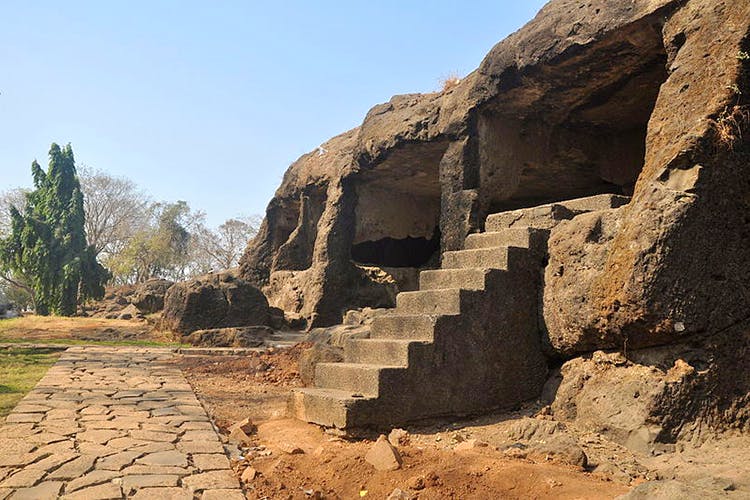
The Kanheri Caves are a group of caves and rock-cut monuments cut into a massive basalt outcrop in the forests of the Sanjay Gandhi National Park, on the former island of Salsette in the western outskirts of Mumbai, India. They contain Buddhist sculptures and relief carvings, paintings and inscriptions, dating from the 1st century CE to the 10th century CE The site is on a hillside, and is accessible via rock-cut steps. The cave complex comprises one hundred and nine caves. The oldest are relatively plain and unadorned, in contrast to later caves on the site, and the highly embellished Elephanta Caves of Mumbai. Each cave has a stone plinth that functioned as a bed. A congregation hall with huge stone pillars contains a stupa . Rock-cut channels above the caves fed rainwater into cisterns, which provided the complex with water. Once the caves were converted to permanent monasteries, their walls were carved with intricate reliefs of Buddha and the Bodhisattvas. Kanheri caves were built in the 1st century and had become an important Buddhist settlement on the Konkan coast by the 3rd century CE.
-
Global Vissapassana Pagoda

The Global Vipassana Pagoda is a Meditation dome hall with a capacity to seat around 8,000 Vipassana meditators (the largest such meditation hall in the world) near Gorai, north-west of Mumbai, Maharashtra, India. The pagoda was inaugurated by Pratibha Patil, then President of India, on 8 February 2009. It is built on donated land on a peninsula between Gorai creek and the Arabian Sea. The pagoda is to serve as a monument of peace and harmony. The Global Vipassana Pagoda has been built out of gratitude to Sayagyi U Ba Khin (1899 - 1971), Vipassana teacher and the first Accountant-General of Independent Burma, who was instrumental in Vipassana returning to India, the country of its origin. Built entirely through voluntary donations, the purpose of the Global Vipassana Pagoda is to share information about Vipassana, and spread information on Gotama the Buddha and his teachings. Vipassanā is the practical quintessence of the universal, non-sectarian teachings of the Buddha.
-
Mani Bhavan Gandhi Museum

Mani Bhavan is a simple old-style, two storied building on Laburnum Road, Mumbai. Whenever Gandhiji was in Mumbai between 1917 to 1934, he stayed here. It is now converted into a museum and research centre Mumbai and its inhabitants have played a very prominent part in India's unique struggle for freedom. Gandhiji was rightly proud of its patriotic and cosmopolitan citizens. Mani Bhavan is one of the few important places hallowed by Mahatma Gandhi's close association. Mani Bhavan, a modest two-storied building on the Laburnum Road in the comparatively quiet locality called Gamdevi, served as Gandhiji's Bombay head-quarters for about seventeen long and eventful years (1917-1934). It belonged to Shri Revashankar Jagjeevan Jhaveri, who was Gandhi's friend and a host during that period. It was from Mani Bhavan that Gandhi initiated Satyagraha against Rowlatt Act and propagated the causes of Swadeshi, Khadi and Hindu-Muslim Unity. In 1955 the building was dedicated as a memorial to Gandhiji and to the very important activities of great significance he initiated from that place. Mani Bhavan has a story to tell as it housed Gandhiji occasionally during the times when he grew in stature and strength, from an agitator to a world figure by successfully introducing satyagraha (individual as well as mass) as a new and effective weapon to fight all evil and injustice.
-
Sofitel Mumbai BKC
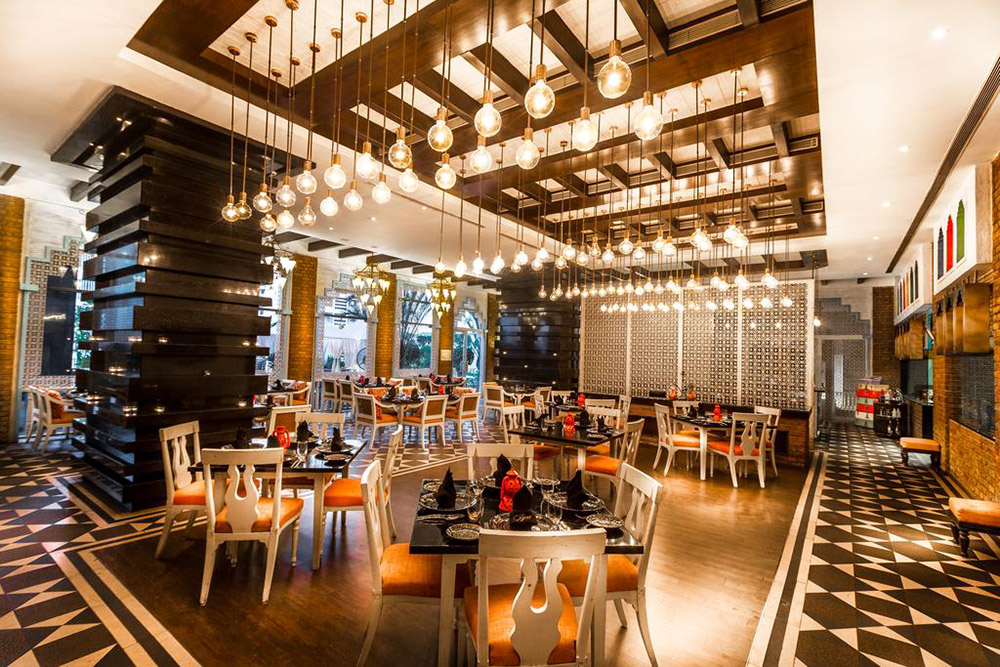
Located in Bandra Kurla Complex Sofitel Mumbai BKC has easy access to north and south Mumbai through the Eastern & Western Express Highways and the Bandra-Worli Sea Link, as well as to both the domestic and the international terminals of Mumbai’s Chhatrapati Shivaji International Airport. Free Wi-Fi, an outdoor pool, pampering spa treatments and a gym are available. JIO World center is 121 m away while US Consulate Generalis is 281 m and MMRDA grounds are 851 m from Sofitel Mumbai BKC. Consulat Général de France is 0.9 mi away and Asian Heart Institute Hospital is 1.2 mi from the property. Fitted with hardwood flooring, all air-conditioned rooms come with a 40-inch flat-screen TV, mini-bar and personal safe. Some rooms have DVD players and iPod docks. Private bathrooms have a bathtub. Prices from Rs.4,500 a night.
-
Trident Bandra Kurla

The 5-star Trident Bandra Kurla provides an outdoor swimming pool and full spa services. Concierge services and room service are available 24 hours. On-site parking is free. Complimentary WiFi is available in all rooms. Stylish with accents of red, the air-conditioned rooms are equipped with a flat-screen TV, DVD Player and iPod connections. A well-stocked mini-bar and a personal safe are also included. Private bathrooms come with either a shower or a bathtub. Trident Bandra Kurla is located in North Mumbai, a 15-minute drive from the domestic airport. It is a 20-minute drive from Chhatrapati Shivaji International Airport and a 40-minute drive from Western Railway Terminus. Prices from Rs.4,750 a night.
-
ITC Maratha, Mumbai

Inspired by the majestic decor of the Maratha dynasty, ITC Maratha, Mumbai presents 5-star accommodations, an outdoor pool and pampering spa treatments. Just 1.1 mi from Mumbai International Airport, it also has 8 dining options. Featuring elegant design, guestrooms are all equipped with a satellite TV and tea/coffee making facilities. Suites include massage chairs and butler services. Private bathrooms come with a bathtub. ITC Maratha, Mumbai is 3.1 mi from Mumbai Domestic Airport and 8.7 mi from Sanjay Gandhi National Park. It is 14 mi from Mahalaxmi Race Course and 17 mi from Bombay Central Railway Station. The Gateway of India is 19 mi away. Prices starting from Rs.5000 a night.
-
Taj Lands End
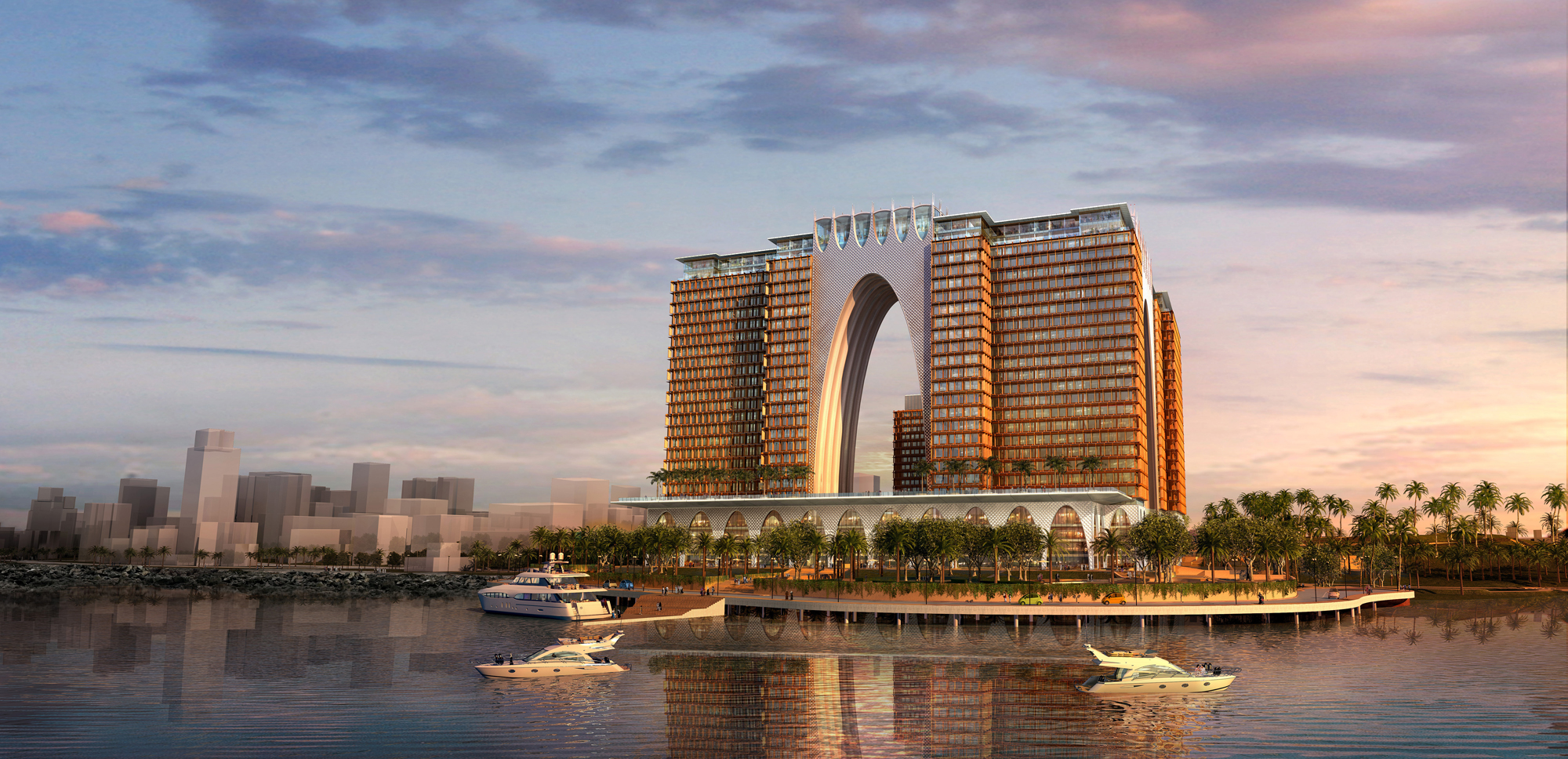
With a view overlooking the Arabian Sea and the Bandra Worli Sea Link, and located just 200 m from the seafront, Taj Lands End features award-winning traditional Indian spa treatments, an outdoor pool and 5 dining options. Taj Lands End is 3.7 mi from Shivaji Park and 5.2 mi from Bandra Kurla Complex. It is 4.5 mi from Juhu Beach. Mumbai International Airport is 6.3 mi away. It offers easy access to the city's business and entertainment spots. For leisure, Taj Lands End has a fully equipped health club and a state-of-the-art salon. Alternatively, guests can also enjoy a beautiful blend of rejuvenating massages and signature treatments rooted in Indian Aromatherapies at the renowned Jiva Spa. A visit to the sauna rooms and yoga sessions compliment the experience.Prices starting from Rs.6,500 a night.
-
The Taj Mahal Tower Mumbai
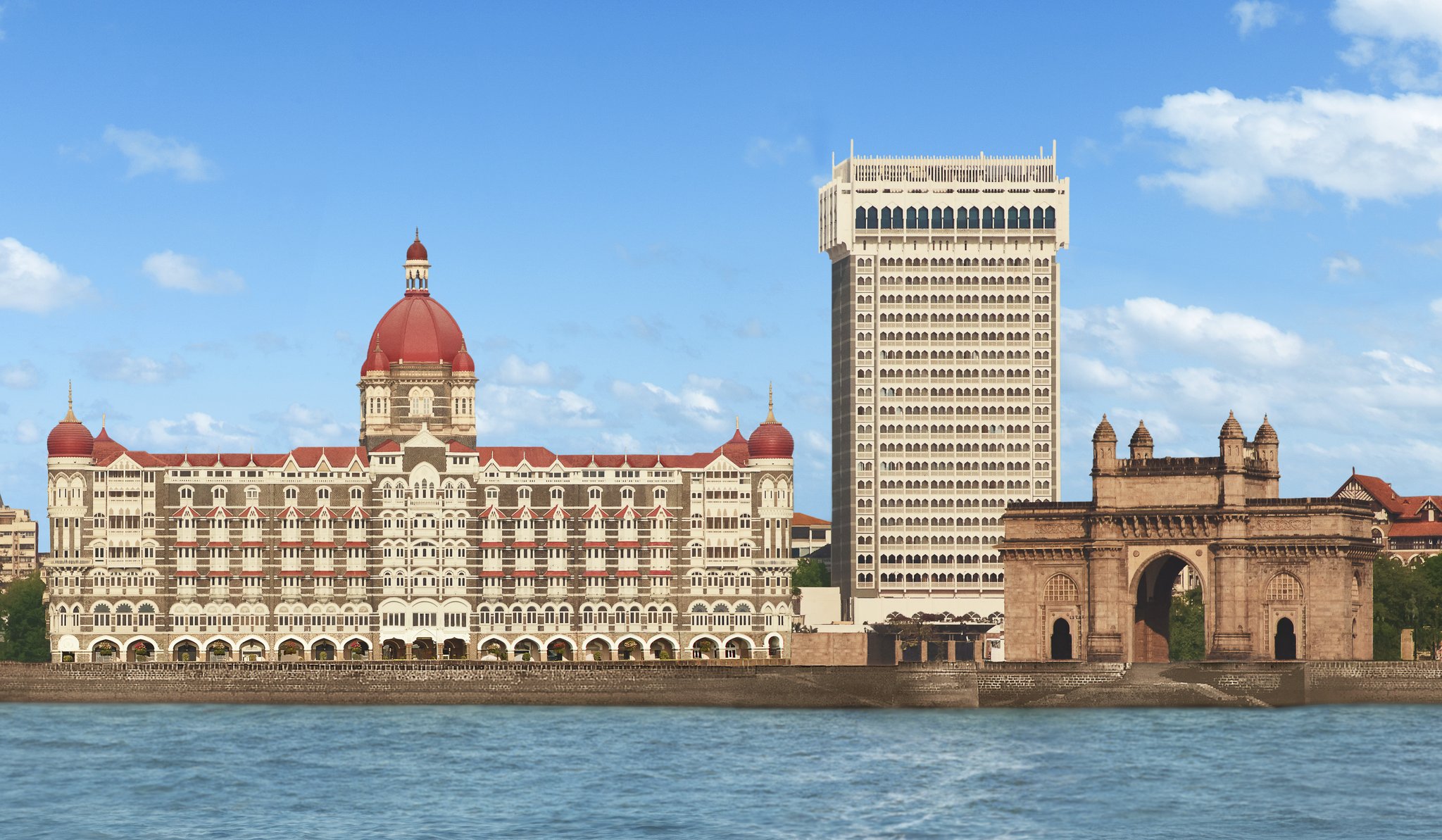
Built in 1973, the iconic The Taj Mahal Tower Mumbai stands majestically across from the Gateway of India, overlooking the Arabian Sea. The Tower stands in harmonious contrast to The Taj Mahal Palace with its arched balconies and newly refurbished rooms. Sprawling over 2.6 acres, this luxurious hotel features 10 restaurants and a variety of traditional Indian therapies at Jiva Spa. Guests are spoiled for choice in dining options – the famous Wasabi by Morimoto offers innovative Japanese cuisine, and other gourmet highlights include the Golden Dragon Chinese Restaurant and the poolside Aquarius Lounge. Stylishly designed, the rooms offer amazing sea, city or pool views. Each room includes a 32-inch flat-screen TV, a well-stocked mini-bar, free WiFi and a luxurious bathroom. Prices from Rs.9,500 a night.
-
Auto Rickshaws
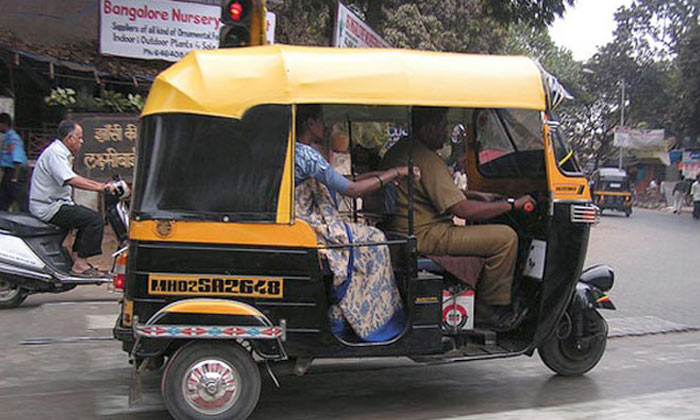
Auto Rickshaws (3-wheeled motors) are a common mode of public transport in Suburban and Navi Mumbai. People prefer travelling by auto rickshaws as they are cheaper than taxis and are easy to hirer especially in narrow lanes where it is not convenient to travel by car. However, they do not protect you from weather conditions like rains.
-
Taxis

Taxis are the most common public transport in Mumbai. Though they are more expensive compared to rickshaws, they provide more comfort.
-
Trains
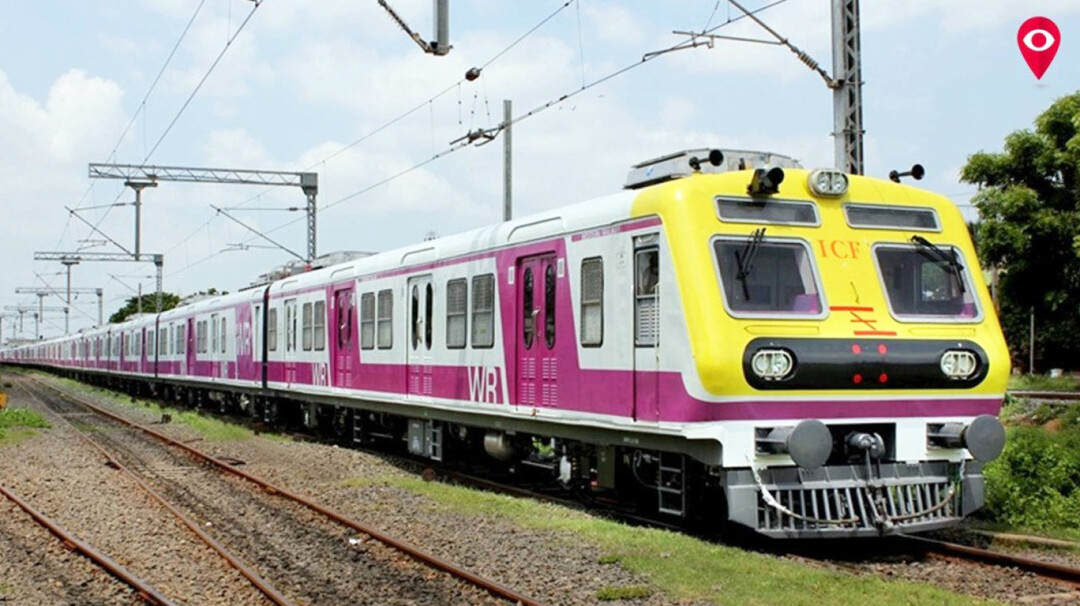
As one of the most popular public transportation in Mumbai, it is used by hundreds of thousands of commuters every day. With a low cost and fast speed, many commuters depend on the local railways to travel to their offices, schools, colleges, etc. The main railway systems are the western line, the central line, the harbor line and the thane line. Nowadays with the arrival of the monorail and metro, the number of commuters has increased.
-
Buses

Commonly used by citizens of Mumbai, buses offer transport from railway stations to their respective travel zones. Though it is slower and more crowded compared to the other modes of public transport, it is the cheapest public transport that gives you access to your home.